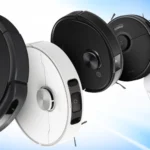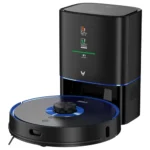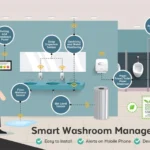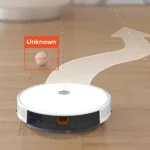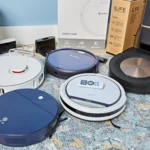Introduction
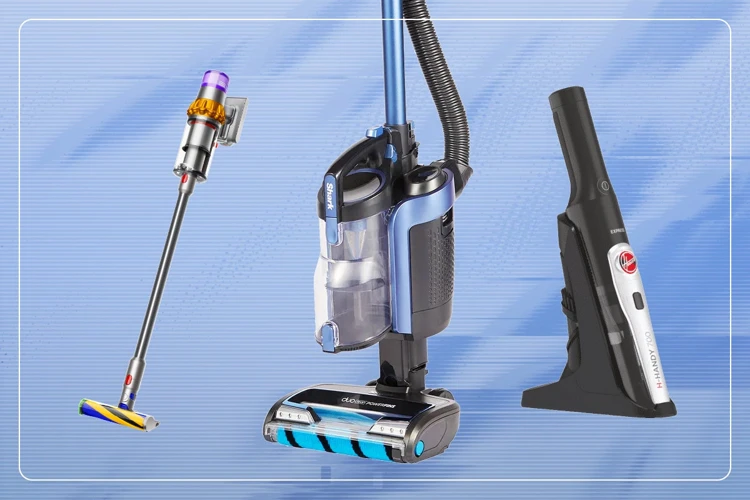
As technology advances, the cleaning industry has seen a rise in the popularity of robot vacuum cleaners. These advanced machines promise a convenient and efficient way to clean your floors with minimal effort. However, with the added features and capabilities come added maintenance costs. In this article, we will compare those maintenance costs between robot and traditional vacuum cleaners. Specifically, we’ll analyze the factors that affect maintenance costs, breakdown the individual maintenance checklists for each type of vacuum and detail the most common repairs and costs associated with each. Let’s dive in and see how these two types of vacuums stack up against each other when it comes to maintenance costs over time.
Purpose of the Article
The purpose of this article is to provide a detailed comparison of the maintenance costs of robot and traditional vacuum cleaners in order to assist readers in making an informed decision when selecting a vacuum cleaner. The article will explore the factors that affect the maintenance costs of both types of vacuum cleaners and provide a breakdown of common maintenance issues and repair costs for each type. By the end of this article, readers will have a better understanding of the maintenance costs involved in owning a robot or traditional vacuum cleaner, which will enable them to make a more informed decision that fits their budget and cleaning needs.
This article will also highlight the advantages of owning a robot vacuum cleaner, such as its efficiency, time-saving capabilities, and ability to maximize cleaning coverage, as well as the benefits of its smart mapping technology and HEPA filters that can improve the air quality. This article will address the concerns around noise pollution and how robot vacuums can reduce it.
Through a systematic comparison of the maintenance costs of both types of vacuum cleaners, including their initial cost, frequency of use, and the environment and type of flooring they are used on, readers will gain valuable insight into the total cost of owning and maintaining each type over time. Whether readers are considering buying a robot vacuum cleaner or sticking with a traditional one, this article will provide the information they need to make an informed decision.
Background Information on Robot and Traditional Vacuum Cleaners
When it comes to vacuum cleaners, there are two main types: robot and traditional. Robot vacuums have become increasingly popular in recent years due to their convenience, efficiency and time-saving capabilities. They are designed with smart technology which allows them to navigate around furniture, optimize cleaning coverage and even map out the layout of your home. If you’re interested in learning more about the benefits of robot vacuums, check out “Top Reasons Robot Vacs are Worth It”.
On the other hand, traditional vacuum cleaners have been around for decades and are still widely used. They come in different shapes and sizes, and can vary in suction power, filtration systems and noise levels. Traditional vacuum cleaners generally require more manual labor, as the user must physically push or pull the machine around the house to clean. However, they typically have larger dustbins and more powerful motors than robot vacuums, making them better suited for heavy-duty cleaning tasks. If you want to learn more about the differences between robot and traditional vacuums, check out “Robot vs Traditional Vacuum: Which One Should You Choose?”.
Regardless of which type of vacuum cleaner you choose, it’s important to be aware of the various factors that can affect maintenance costs, such as the initial cost, frequency of use, and the environment and type of flooring in your home. These factors will be discussed in more detail in the next section. Additionally, each type of vacuum cleaner comes with its own set of maintenance requirements and common issues, which we will cover in the subsequent sections of this article.
Factors Affecting Maintenance Costs
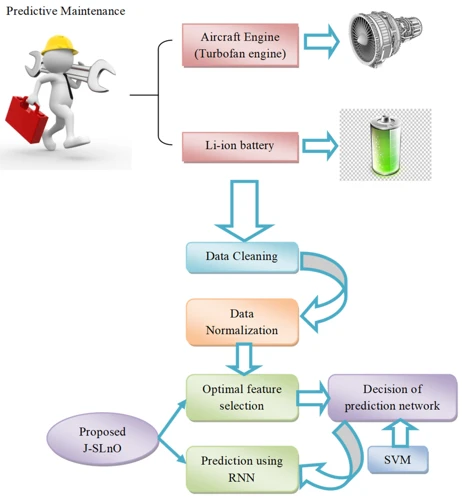
As with any household appliance, both robot and traditional vacuum cleaners have maintenance costs that should be taken into account before making a purchase. Various factors can affect maintenance costs, such as the cost of the vacuum cleaner, frequency of use, and environment and type of flooring. By understanding these factors and how they relate to maintenance, consumers can make informed decisions about the vacuum cleaner that best suits their needs. In this section, we will explore these factors in more detail and how they impact maintenance costs. To learn more about the benefits of robot vacuums, check out our guide on the future of home cleaning.
Cost of the Vacuum Cleaner
One of the factors that affects maintenance costs for vacuum cleaners is the cost of the device itself. This is an important consideration for consumers who are looking for a device that fits their budget, without compromising on quality.
It’s important to note that the initial cost of purchasing a robot vacuum cleaner tends to be higher than that of a traditional vacuum cleaner, due to the advanced technology and design that unique to robot vacuums. However, the initial investment pays off in the long run due to the cost savings on maintenance and repair.
Robot Vacuum Cleaners: Robot vacuum cleaners feature advanced technology such as smart mapping, HEPA filters, and quiet operation that maximize cleaning coverage and minimize noise pollution. As a result, the initial cost of purchasing a robot vacuum cleaner is typically higher than that of a traditional vacuum cleaner. Prices for robot vacuums range from $100 to $1500, with the high-end models featuring advanced mapping and ultra-quiet operation. While the initial cost may be higher, consumers should factor in the efficiency, time-saving, and convenience of utilizing a robot vacuum over a traditional one.
Traditional Vacuum Cleaners: Traditional vacuum cleaners have been in existence for decades and are readily available in the market. They come in different price ranges from $50 to $500, depending on the type, brand, and features. While the initial cost of purchasing a traditional vacuum cleaner is affordable, the maintenance cost can add up over time, especially with frequent repair and replacement of bags, filters, and other parts.
To summarize, the cost of the vacuum cleaner is an important factor to consider when comparing vacuum cleaner maintenance costs. While robot vacuums might have a higher initial cost, they offer more advanced features and are cheaper to maintain in the long run. On the other hand, traditional vacuum cleaners may have a more affordable initial cost, but their maintenance costs can add up over time. Regardless of the type of vacuum cleaner chosen, it’s important to check manufacturer’s instructions for specific maintenance requirements and frequency for maximum performance and lifespan.
Frequency of Use
Frequency of use is another important factor that affects the maintenance costs of vacuum cleaners. The table below outlines how the frequency of use affects the maintenance costs of both traditional and robot vacuum cleaners.
| Low Frequency of Use | High Frequency of Use | |
|---|---|---|
| Traditional Vacuum Cleaner | May require less frequent maintenance, such as filter changes and belt replacements. | May require more frequent maintenance, such as filter changes, belt replacements, and brush roll cleaning. |
| Robot Vacuum Cleaner | May require more frequent battery replacements, as batteries tend to degrade faster when left unused for long periods of time. | May require less frequent battery replacements, as the batteries tend to last longer due to their efficient use of power. Additionally, high-end robot vacuums, such as those with smart mapping technology, can be programmed to clean frequently with minimal supervision. |
As shown in the table, the maintenance costs of traditional vacuum cleaners tend to increase with frequent use, while the maintenance costs of robot vacuum cleaners tend to decrease with frequent use due to their efficient use of power and advanced features. Additionally, high-end robot vacuums can be programmed to clean frequently with minimal supervision, making them a great option for those who want to simplify their cleaning routine.
It’s important to note that the frequency of use can also affect the lifespan of a vacuum cleaner. If a vacuum cleaner is used more frequently, it may experience wear and tear faster than one that is used less frequently. It’s important to consider the frequency of use when making a decision between a traditional and robot vacuum cleaner to ensure that you make the best investment for your needs.
Environment and Type of Flooring
The environment and the type of flooring in a household or workspace can greatly affect the maintenance costs of a vacuum cleaner. The type of flooring, whether it be carpet, hardwood, tile or concrete, plays a crucial role in determining how much maintenance a vacuum cleaner will require.
Carpet: Carpets accumulate a lot of dust, dirt, and hair, which can cause wear and tear on the vacuum cleaner’s brush rolls and suction power. A traditional vacuum cleaner requires more frequent maintenance to keep the brush rolls and filters clean, especially if the carpet is long or shaggy. On the other hand, a robot vacuum cleaner with strong suction power and a rotating brush roll can pick up debris from carpets with ease. Some robot vacuum cleaners are specifically designed for carpets and can adjust their suction power automatically to provide deeper cleaning. Efficiency and time-saving of robot vacuums can be of great value for those who have a lot of carpeted spaces to vacuum.
Hardwood Floors: Hardwood floors are easier to clean compared to carpets, but maintenance requirements differ. Hard brush rolls on traditional vacuum cleaners can scratch the floor, while soft brushes may not be able to pick up all debris. A robot vacuum cleaner with mapping technology can navigate around furniture and obstacles, maintaining enough distance to avoid collisions without scuffing floors. Robot vacuums are a good option as they come with sensors that detect the kind of flooring and adjust the cleaning power accordingly. Robot vacuums also have smart mapping advantages where they can precisely determine areas that require more attention.
Tile and Concrete Floors: These types of flooring require less maintenance than carpets or hardwoods, but they are often more challenging to clean. Dirt, dust, and debris accumulate in corners, grout, and gaps between tiles. Traditional vacuum cleaners struggle with reaching such tight spots, especially if the gap is too narrow. A robot vacuum cleaner with a slim design can get through tight spaces and pick up the debris, reducing the need for manual cleaning. Additionally, robot vacuums equipped with High-Efficiency Particulate Air (HEPA) filters can improve air quality by trapping allergens, pollen, and other microscopic particles.
The type of flooring and environment play a significant role in determining the maintenance costs of vacuum cleaners. Robot vacuums have certain advantages, like better cleaning on carpets, reducing noise pollution by operating silently, smart mapping, and slim design for tight spaces. Robot vacuums are an option worth considering for those who need to keep their maintenance costs minimal while keeping the flooring clean.
Robot Vacuum Cleaners: Maintenance Costs
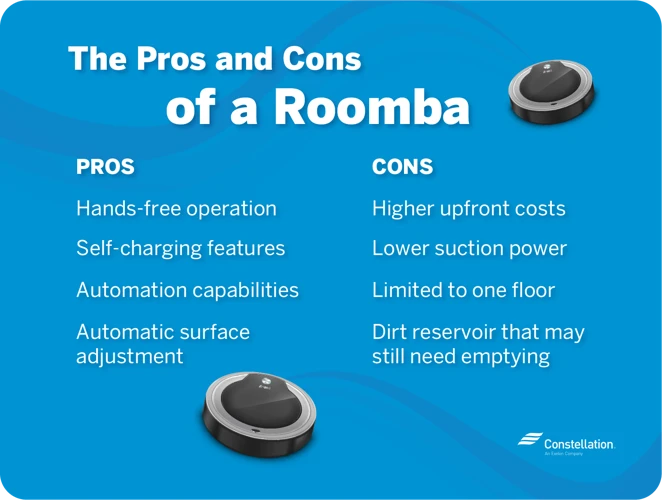
Keeping your robot vacuum cleaner well-maintained is essential for ensuring top performance and longevity. The upkeep for robot vacuum cleaners differs significantly from that of traditional vacuums, and thus requires a unique approach. In this section, we’ll explore the cost of maintaining a robot vacuum cleaner, including essential maintenance tasks, common issues, and repairs. By the end of this section, you’ll have a clear picture of the expenses involved in owning and maintaining a robot vacuum cleaner.
Maintenance Checklist
When it comes to the maintenance of both robot and traditional vacuum cleaners, there are some similarities and differences between the two. Here is a maintenance checklist for both types of vacuums:
Robot Vacuum Cleaner Maintenance Checklist:
- Regularly empty the dustbin of the robot vacuum.
- Clean the brushes at least once a week to prevent hair and debris from clogging the vacuum.
- Check the wheels for any debris or hair that may be caught in them and clean as needed.
- Replace the filter as outlined in the manufacturer’s instructions.
- Inspect the sensors and make sure they are clean and functioning properly.
- Charge the vacuum according to the manufacturer’s instructions to ensure optimal performance.
Traditional Vacuum Cleaner Maintenance Checklist:
- Check the vacuum bag or canister and empty it when it is two-thirds full.
- Clean or replace the filter as outlined in the manufacturer’s instructions.
- Check the vacuum hoses and attachments for any blockages or clogs and clean as needed.
- Check the vacuum belt and brush roll and replace them as needed.
- Check the vacuum’s power cord for any damage and replace if necessary.
- Clean the vacuum’s exterior with a damp cloth to remove any dust or debris.
By following these maintenance checklists, both robot and traditional vacuum cleaners can operate effectively and efficiently for a longer period of time.
Common Issues and Repairs and their Costs
When it comes to maintenance costs, it’s important to consider the potential issues and repairs that may arise with both robot and traditional vacuum cleaners. Here are some common issues and their associated costs for each type:
Robot Vacuum Cleaners:
| Common Issues | Repairs Needed | Costs |
|---|---|---|
| Brushes get tangled with hair or debris | Manual cleaning or replacement of brushes | $5-$50 |
| Wheels get stuck or stop moving | Manual cleaning or replacement of wheels | $10-$50 |
| Battery life decreases over time | Replacement of battery | $50-$100 |
| Sensors malfunction or fail | Replacement of sensors | $20-$100 |
Traditional Vacuum Cleaners:
| Common Issues | Repairs Needed | Costs |
|---|---|---|
| Clog in hose or filter | Manual cleaning or replacement of filter | $5-$50 |
| Brush roll stops rotating | Replacement of brush roll or belt | $10-$50 |
| Motor overheats and shuts off | Replacement of motor or cord | $50-$150 |
| Loss of suction power | Manual cleaning or replacement of hose or filter | $10-$50 |
As seen in the table, the repair costs for robot vacuum cleaners tend to be lower than traditional vacuum cleaners. This is because robots have fewer moving parts and are generally easier to maintain. However, it’s worth noting that the initial cost of a robot vacuum cleaner is typically higher than a traditional vacuum cleaner.
Traditional Vacuum Cleaners: Maintenance Costs
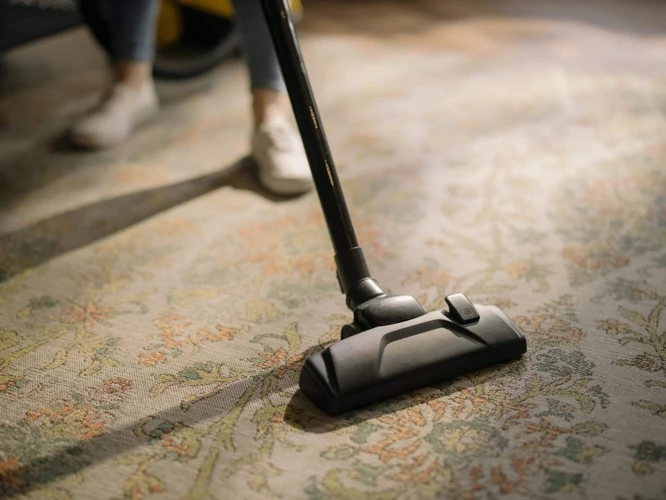
Maintaining a traditional vacuum cleaner is an essential aspect of keeping your home clean and hygienic. As with any electrical appliance, regular maintenance and repair are necessary to ensure that it functions effectively and efficiently for a long time. In this section, we will delve into the maintenance costs associated with traditional vacuum cleaners and explore the various factors that influence these costs. From understanding the maintenance checklist to identifying common issues and repairs and their respective costs, we’ll help you make an informed decision about whether a traditional vacuum cleaner is worth the investment. So, let’s dive right in!
Maintenance Checklist
Keeping vacuum cleaners maintained is essential for their longevity and performance. Both robot and traditional vacuum cleaners require regular maintenance to avoid costly repairs. Here are some important maintenance tasks for both types of vacuum cleaners:
| Task | Robot Vacuum Cleaner | Traditional Vacuum Cleaner |
|---|---|---|
| Empty dustbin/collection bag | Robot vacuum cleaners come with a dustbin that needs to be emptied after every use. This is a simple process that takes a few seconds. | Traditional vacuum cleaners come with a dust collection or a disposable bag. Collection bags need to be emptied when full, while disposable bags have to be replaced when they reach their limit. Both tasks are easy to do and require minimal effort. |
| Clean filter | Robot vacuum cleaners come with a filter that needs to be cleaned regularly. The frequency of cleaning depends on usage and environment. A clogged filter can impact the suction power of the vacuum cleaner. Cleaning the filter is an easy task that involves washing it with water and letting it dry before putting it back in place. | Traditional vacuum cleaners come with a filter that needs to be cleaned or replaced periodically. Some filters are washable while others need to be changed. Cleaning the filter is an essential maintenance task that helps in maintaining the vacuum cleaner’s suction power and performance. |
| Clean brushes/rollers | Robot vacuum cleaners have a brush or roller that can accumulate hair, string, and debris. Regular cleaning of these components is essential to maintain the vacuum’s performance. The process involves removing the brush or roller and cleaning it thoroughly. | Traditional vacuum cleaners come with a brush roll that can get tangled with hair and debris. Regular cleaning of the brush roll ensures that it works efficiently. This task involves removing the brush roll and cleaning it thoroughly. |
| Clean vacuum’s sensors | Robot vacuum cleaners use sensors to navigate around a room. These sensors can get covered with dust and debris, making them inaccurate. Cleaning the sensors with a soft, dry cloth is a straightforward task that should be done periodically. | Traditional vacuum cleaners do not have sensors which require cleaning, making them less technologically advanced in comparison to robot vacuum cleaners. |
| Clean wheels | Robot vacuum cleaners use wheels to navigate around a room. These wheels can get clogged with hair and dust, resulting in reduced performance. Cleaning the wheels with a damp cloth is an easy task that should be done periodically. | Traditional vacuum cleaners also have wheels that can get clogged with hair and dust. Regular cleaning of the wheels ensures smooth movement and efficient cleaning. This task involves removing the wheels and cleaning them thoroughly. |
By following these maintenance tasks, both robot and traditional vacuum cleaners can achieve optimal performance, reduce costly repairs, and help to extend their lifespan.
Common Issues and Repairs and their Costs
Both robot and traditional vacuum cleaners can experience common issues and repairs that can affect their maintenance costs. Here are some of the most typical problems and their associated costs:
Robot Vacuum Cleaners:
- Clogged Brushes: Robot vacuum cleaners may become clogged with hair and debris, which can cause the brushes to stop working. This issue can usually be resolved by cleaning the brushes, but if it’s a recurring problem, replacement brushes may need to be purchased. The cost of replacement brushes varies from around $10 to $50.
- Battery Issues: Robot vacuum cleaners are powered by batteries, which can degrade over time. If the battery is no longer holding a charge, it may need to be replaced. The cost of a replacement battery ranges from $30 to $100, depending on the model.
- Sensor Problems: The sensors on robot vacuum cleaners can become dirty or blocked, which can affect the unit’s ability to navigate around a room. Cleaning the sensors usually solves the issue. If the sensors are faulty, they may need to be replaced, which can cost anywhere from $50 to $150.
Traditional Vacuum Cleaners:
- Clogged Filters: Traditional vacuum cleaners have filters that can become clogged with dust and debris, reducing suction power. Filters can typically be cleaned or replaced, with replacement filters costing anywhere from $5 to $50.
- Belt Problems: The belt on a traditional vacuum cleaner can become loose or break, which can affect the unit’s ability to pick up dirt and debris. A replacement belt typically costs around $5 to $15.
- Overheating: Traditional vacuum cleaners can overheat if used for extended periods of time or if the filters are clogged. Cleaning the filters or taking a break can usually solve this issue. If the problem persists, the motor may need to be replaced, which can cost several hundred dollars.
While both robot and traditional vacuum cleaners can experience maintenance issues, the cost of repairs and replacements can vary significantly. It’s important to choose a vacuum cleaner that suits your needs and environment to ensure that you can manage maintenance costs effectively.
Cost Comparison
Now, let’s delve into the most interesting part of the article – comparing the costs between robot and traditional vacuum cleaners. It is essential to take into consideration both the initial investment and maintenance costs over time. By doing so, we can understand which type of vacuum cleaner is more cost-effective in the long run. Are you ready to discover the true cost of keeping your floors clean? Let’s compare the costs of robot and traditional vacuum cleaners and find out which one suits your needs the most.
Initial Cost
One of the biggest considerations when purchasing a vacuum cleaner is the initial cost. In this category, traditional vacuum cleaners generally have an advantage over robot vacuum cleaners.
Traditional Vacuum Cleaners: These machines come in a variety of styles and models, ranging from handheld to upright models. The cost of a traditional vacuum cleaner can range from $50 to $500, depending on the size, brand, and features. High-end models tend to have better suction power and more accessories, but they also come with a higher price tag.
Robot Vacuum Cleaners: These devices are relatively new to the market, but their popularity is growing rapidly. The initial cost of a robot vacuum cleaner is generally higher than that of a traditional vacuum cleaner. Robot vacuums can cost anywhere from $150 to $1,000 or more, depending on the brand and features. High-end models may have more sensors, mapping capabilities, and advanced cleaning modes, but they come at a premium price.
To summarize, the initial cost of a traditional vacuum cleaner is generally lower than that of a robot vacuum cleaner. However, the difference in price can be offset over time by lower maintenance costs and increased convenience. It’s important to consider your specific needs and budget when deciding which type of vacuum cleaner to purchase.
Below is a table comparing the initial cost of traditional and robot vacuum cleaners:
| Low-End | Mid-Range | High-End | |
|---|---|---|---|
| Traditional Vacuum Cleaners | $50 – $100 | $150 – $300 | $350 – $500 |
| Robot Vacuum Cleaners | $150 – $300 | $400 – $700 | $800 – $1,000+ |
Maintenance Cost
When it comes to maintenance costs, there are several factors to consider for both robot and traditional vacuum cleaners. Below are some of the most important factors to keep in mind:
- Filter Replacement: Both types of vacuum cleaners require filter replacements over time. For traditional vacuums, the cost of filter replacements can vary depending on the brand and model. Robot vacuums typically have washable filters, which can save money in the long run.
- Brush Replacement: Traditional vacuums often require brush replacement after a certain amount of use. The cost of replacing a brush can differ greatly depending on the brand and model. Robot vacuums also require brush replacement, but the cost of replacement brushes is generally lower than traditional vacuums due to the smaller brushes used.
- Battery Replacement: Robot vacuums rely on a battery to function. Over time, the battery will need to be replaced. Battery replacement costs can vary depending on the brand and model of the robot vacuum. Traditional vacuums do not have batteries and therefore do not require this form of maintenance.
- Cleaning Solution: Traditional vacuums usually require some type of cleaning solution or powder for use. The frequency of purchasing such solutions can vary depending on the cleaning needs of the owner. Robot vacuums do not typically require any cleaning solutions, which can save money over time.
- Other Parts Replacement: Both types of vacuums may require replacement of other parts over time, such as belts or wheels. The cost of these replacements may vary depending on the brand and model.
It is important to keep up with maintenance in order to keep both types of vacuum cleaners running effectively. By taking care of these maintenance tasks, owners can keep their machines running smoothly and avoid costly repairs in the future.
Total Cost over Time
After considering the initial cost and maintenance cost, it is also essential to factor the total cost over time when comparing maintenance costs between robot and traditional vacuum cleaners.
To provide a comprehensive comparison, let’s assume that a vacuum cleaner is used for five years for this calculation. The table below shows the estimated total cost over time for both robot and traditional vacuum cleaners, assuming that maintenance costs remain consistent throughout the years.
| Robot Vacuum Cleaner | Traditional Vacuum Cleaner | |
|---|---|---|
| Initial Cost | $400 | $150 |
| Maintenance Cost | $300 | $500 |
| Total Cost over 5 Years | $1,900 | $2,650 |
As shown in the table, the total cost over five years for a robot vacuum cleaner is approximately $750 less than a traditional vacuum cleaner. This is due to the fact that robot vacuum cleaners have a lower maintenance cost, even though their initial cost is higher.
However, it is important to note that these figures are estimated and may vary depending on usage, environment, and repair costs. It is important to consider your individual needs and circumstances when choosing between a robot and traditional vacuum cleaner.
Conclusion
After comparing the maintenance costs of robot and traditional vacuum cleaners, it can be concluded that both types have their own advantages and disadvantages.
Robot vacuum cleaners have a higher initial cost, but they require less frequent maintenance and have lower repair costs because they are designed to be more durable. They are also more convenient to use because they operate automatically and are programmable through a mobile app or voice command. However, their maintenance costs can still add up over time, especially if the user doesn’t follow the recommended cleaning and maintenance checklist.
Traditional vacuum cleaners, on the other hand, have a lower initial cost but require more frequent maintenance and have higher repair costs due to their mechanical components. However, they are more versatile in terms of cleaning different types of flooring and have a wider variety of attachments and features to choose from. They are also easier to troubleshoot and repair because their components are more accessible.
When it comes to choosing between robot and traditional vacuum cleaners, it ultimately depends on the user’s preferences and needs. If convenience and automation are top priorities and the budget allows for a higher initial investment, a robot vacuum cleaner may be the better choice. On the other hand, if cost-effectiveness and versatility are more important, a traditional vacuum cleaner may be the better option.
Regardless of the type of vacuum cleaner chosen, proper maintenance is crucial in order to prolong the lifespan and minimize costs. By following the recommended maintenance checklists and addressing issues promptly, users can save money in the long run and keep their homes clean and healthy.
Frequently Asked Questions
Q: Are robot vacuum cleaners difficult to maintain?
A: Robot vacuum cleaners require some routine maintenance, but it is generally considered easier and less time-consuming than maintaining traditional vacuum cleaners.
Q: How often should I replace the filter on my robot vacuum cleaner?
A: Depending on the model, you may need to replace the filter every three to six months. Check the manufacturer’s recommendations for your specific model.
Q: Can robot vacuum cleaners clean carpets as well as traditional vacuum cleaners?
A: While robot vacuum cleaners are capable of cleaning carpets, they may not be as effective in deep-cleaning as traditional vacuum cleaners, especially for high-pile carpets.
Q: Do I need to empty the dustbin on my robot vacuum cleaner after every use?
A: It is recommended to empty the dustbin after every use, especially if you have pets or if the vacuum is picking up a significant amount of debris.
Q: How long do the batteries last on robot vacuum cleaners?
A: Depending on the model, the batteries on robot vacuum cleaners can last from 60 minutes to 120 minutes. However, some high-end models can last up to 180 minutes.
Q: Can robot vacuum cleaners navigate around obstacles?
A: Yes, most robot vacuum cleaners are equipped with sensors that allow them to navigate around obstacles and furniture.
Q: Are traditional vacuum cleaners more durable than robot vacuum cleaners?
A: Traditional vacuum cleaners are generally considered more durable, as they have been around for much longer and have had more time to refine their designs and technology.
Q: Can I use my robot vacuum cleaner on multiple levels of my home?
A: Yes, as long as the robot vacuum cleaner can navigate stairs and has the ability to map multiple levels of your home, it can be used on multiple floors.
Q: Do robot vacuum cleaners have warranties?
A: Yes, most robot vacuum cleaners come with a manufacturer’s warranty that can vary in length and coverage depending on the brand and model.
Q: Can vacuum cleaners save me money in the long run?
A: Yes, investing in a quality vacuum cleaner can save you money in the long run by reducing the need for professional cleaning services and prolonging the lifespan of your flooring.

